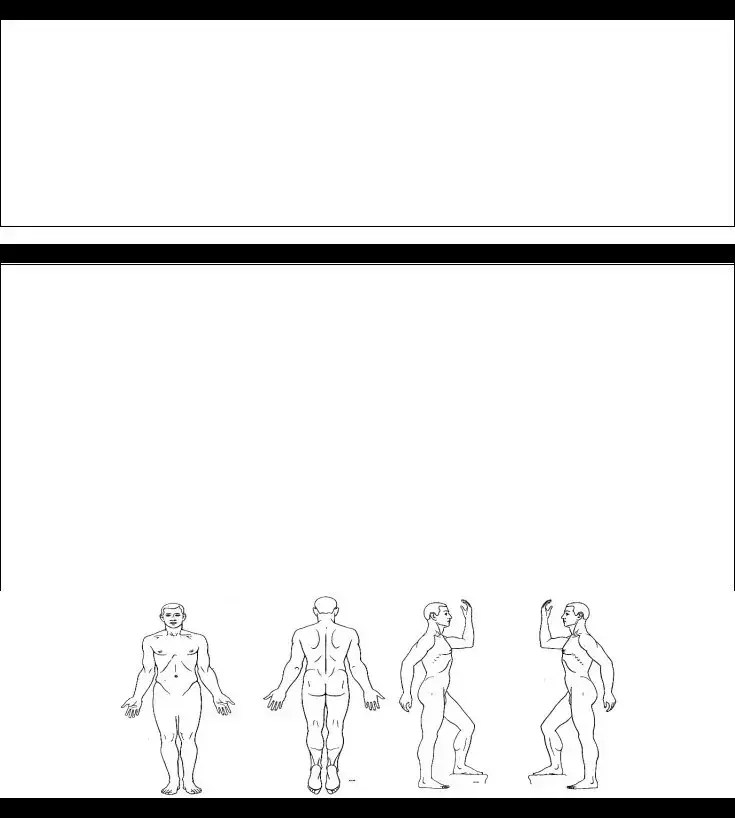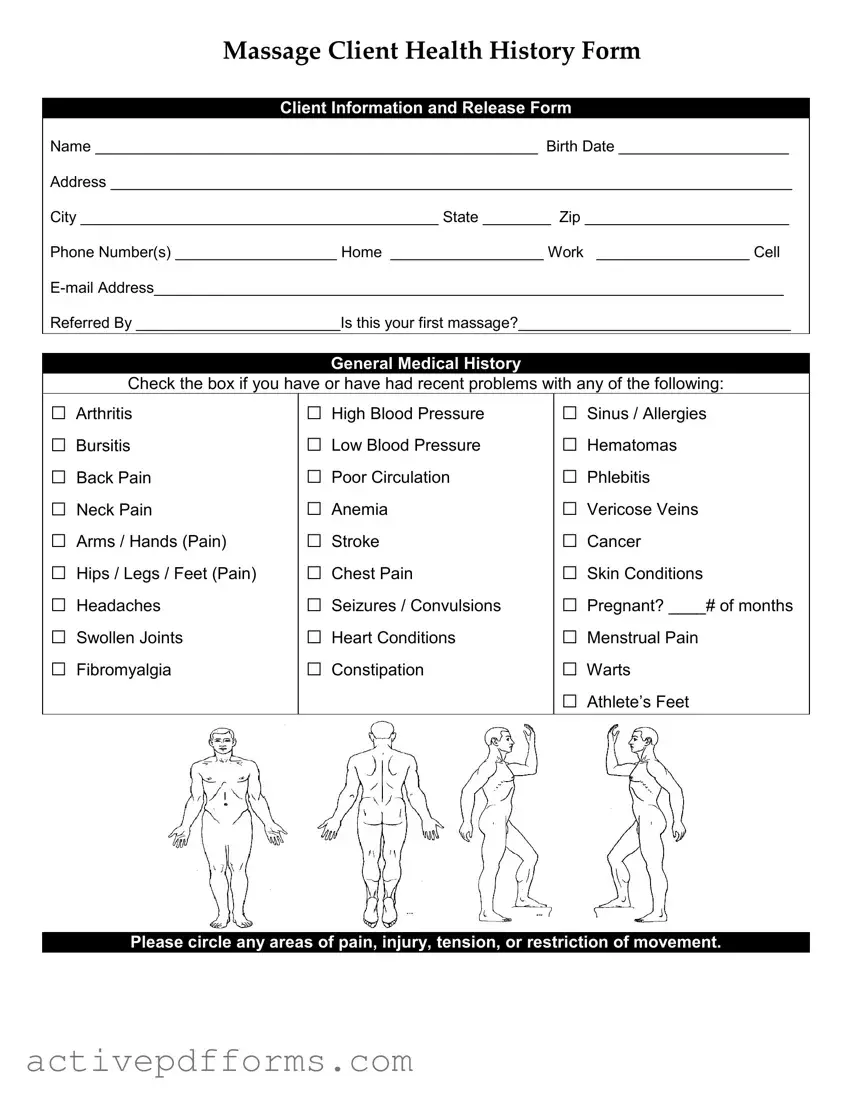
Massage Client Health History Form
Client Information and Release Form
Name ____________________________________________________ Birth Date ____________________
Address ________________________________________________________________________________
City __________________________________________ State ________ Zip ________________________
Phone Number(s) ___________________ Home __________________ Work __________________ Cell
E-mail Address__________________________________________________________________________
Referred By ________________________Is this your first massage?________________________________
General Medical History
Check the box if you have or have had recent problems with any of the following:
□ Arthritis |
□ High Blood Pressure |
□ Sinus / Allergies |
□ Bursitis |
□ Low Blood Pressure |
□ Hematomas |
□ Back Pain |
□ Poor Circulation |
□ Phlebitis |
□ Neck Pain |
□ Anemia |
□ Vericose Veins |
□ Arms / Hands (Pain) |
□ Stroke |
□ Cancer |
□ Hips / Legs / Feet (Pain) |
□ Chest Pain |
□ Skin Conditions |
□ Headaches |
□ Seizures / Convulsions |
□ Pregnant? ____# of months |
□ Swollen Joints |
□ Heart Conditions |
□ Menstrual Pain |
□ Fibromyalgia |
□ Constipation |
□ Warts |
|
|
□ Athlete’s Feet |
Please circle any areas of pain, injury, tension, or restriction of movement.
Have you recently suffered an acute injury? _____________________________________________
Have you had any recent surgery? ____________________________________________________
Do you have any other medical conditions that I should be aware of? _________________________
Where do you carry your stress and tension? ____________________________________________
Do you wear contacts? _____________________________________________________________
Do you have any problem areas / injuries? ______________________________________________
Do you take any prescription medications? ______________________________________________
Do you have any allergies? Yes or No, and if yes what are you allergic to? _____________________
Describe exercise activities that you do. Include Frequency. ________________________________
Are you very sensitive to touch / pressure in any areas? ____________________________________
What type of pressure do you like? ____________________________________________________
What is your goal in the session today? _________________________________________________
Please list any additional comments regarding your health and well being if needed. _____________
________________________________________________________________________________
Your answers to these questions will be discussed with you prior to your session. Thank You.
Please take a moment to carefully read the following information and sign where indicated.
I understand that the massage I receive is provided for the basic purpose of relaxation, stress reduction, and relief of muscular tension. If I experience any pain or discomfort during this session, I will immediately inform the practitioner so that the pressure and / or strokes may be adjusted to my level of comfort.
I further understand that massage should not be considered as a substitute for medical examination, diagnosis, or treatment and that I should see a physician, chiropractor, or other qualified medical specialist for any mental or physical ailment that I am aware of.
I understand that massage practitioners are not qualified to perform spinal or skeletal adjustments, diagnosis, prescribe, or treat any physical or mental illness, and that nothing said in the course of the session(s) given should be considered as such. Further, no comments or gestures that are sexual in nature will be tolerated by the massage therapist. In the event that I violate this policy, my session will be immediately terminated.
Because massage is contraindicated under certain medical conditions, I affirm that I have stated all my known medical conditions, and answered all questions honestly. I agree to keep the practitioner updated as to any changes in my medical profile, and understand that there shall not be liability on the practitioner’s part should I forget to do so.
Signature______________________________________________________Date _____________________
Consent for minors is required prior to treatment.
Signature of Guardian____________________________________________ Date _____________________
Printed name of Guardian __________________________________________________________________
Phone number the Guardian can be reached in case of emergency __________________________________


